Coronary Artery Disease Reporting and Data System: A Comprehensive Review
- PMID: 34080334
- PMCID: PMC8792723
- DOI: 10.4250/jcvi.2020.0195
Coronary Artery Disease Reporting and Data System: A Comprehensive Review
Abstract
The Coronary Artery Disease Reporting and Data System (CAD-RADS) is a standardized reporting method for coronary computed tomography angiography (CCTA). It summarizes the findings of CCTA in 6 categories ranging from CAD-RADS 0 (complete absence of coronary artery disease) to CAD-RADS 5 (total occlusion of at least one vessel). It is applied on per patient basis for the highest grade of the stenotic lesion. The CAD-RADS also provides category-specific treatment recommendations, helping patient management. The main objectives of the CAD-RADS are to improve the consistency in reporting, facilitate the communication between interpreting and referring clinicians, recommend the best course of patient management, and produce consistent data for quality improvement, research and education. However, CAD-RADS has many limitations, resulting into the misclassification of the observed findings, misinterpretation of the final category, and misguidance for the treatment based upon the single score. In this review, the authors discuss the CAD-RADS categories and modifiers, along with the strengths and limitations of this new classification system.
Keywords: Coronary artery; Coronary artery disease; Stenosis.
Copyright © 2022 Korean Society of Echocardiography.
Conflict of interest statement
The authors have no financial conflicts of interest.
Figures


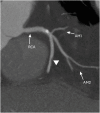
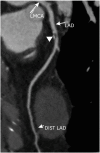


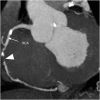


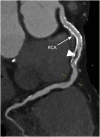



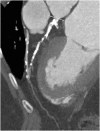


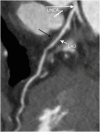
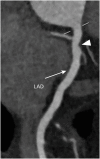







References
-
- Leipsic J, Abbara S, Achenbach S, et al. SCCT guidelines for the interpretation and reporting of coronary CT angiography: a report of the Society of Cardiovascular Computed Tomography guidelines committee. J Cardiovasc Comput Tomogr. 2014;8:342–358. - PubMed
-
- Abbara S, Arbab-Zadeh A, Callister TQ, et al. SCCT guidelines for performance of coronary computed tomographic angiography: a report of the Society of Cardiovascular Computed Tomography guidelines committee. J Cardiovasc Comput Tomogr. 2009;3:190–204. - PubMed
-
- Achenbach S, Delgado V, Hausleiter J, Schoenhagen P, Min JK, Leipsic JA. SCCT expert consensus document on computed tomography imaging before transcatheter aortic valve implantation (TAVI)/transcatheter aortic valve replacement (TAVR) J Cardiovasc Comput Tomogr. 2012;6:366–380. - PubMed
-
- Taylor AJ, Cerqueira M, Hodgson JM, et al. ACCF/SCCT/ACR/AHA/ASE/ASNC/ NASCI/SCAI/SCMR 2010 appropriate use criteria for cardiac computed tomography. A report of the American College of Cardiology Foundation appropriate use criteria task force, the Society of Cardiovascular Computed Tomography, the American College of Radiology, the American Heart Association, the American Society of Echocardiography, the American Society of Nuclear Cardiology, the North American Society for Cardiovascular Imaging, the Society for Cardiovascular Angiography and Interventions, and the Society for Cardiovascular Magnetic Resonance. J Cardiovasc Comput Tomogr. 2010;4:407.e1–407.e33. - PubMed
Publication types
LinkOut - more resources
Full Text Sources
Miscellaneous

